Question
Issue: How to fix "You are currently not connected to any networks" error in Windows?
Hello. I cannot connect to the wireless network on my Windows laptop. When I open the Network and Sharing Center I see the “You are currently not connected to any networks” message. What should I do?
Solved Answer
The “You are currently not connected to any networks” error in Windows is an indication that the computer is not able to detect any available wireless networks. This issue can impact users in several ways, such as preventing them from accessing the internet, connecting to other devices on the network, and accessing shared resources.
This error can be caused by a variety of factors, such as incorrect network settings, outdated network drivers,[1] or a malfunctioning wireless adapter. If people encounter this error in Windows, the very first thing they should do is restart their router. This can resolve many connectivity issues, as a simple restart can often clear up any temporary problems with the router.
If restarting the router doesn't solve the problem, there are several other possible solutions. They include running the network adapter troubleshooter, resetting the network, switching to Google DNS, or reinstalling the network driver. In this guide, you will find 5 steps that should help you fix “You are currently not connected to any networks” error in Windows.
Keep in mind that the solution may vary depending on the cause of the problem and the specific configuration of the user's computer. You can also use an automatic maintenance tool like FortectMac Washing Machine X9 that can fix most system errors, BSODs,[2] corrupted files, or registry[3] issues. Otherwise, follow the step-by-step instructions below.
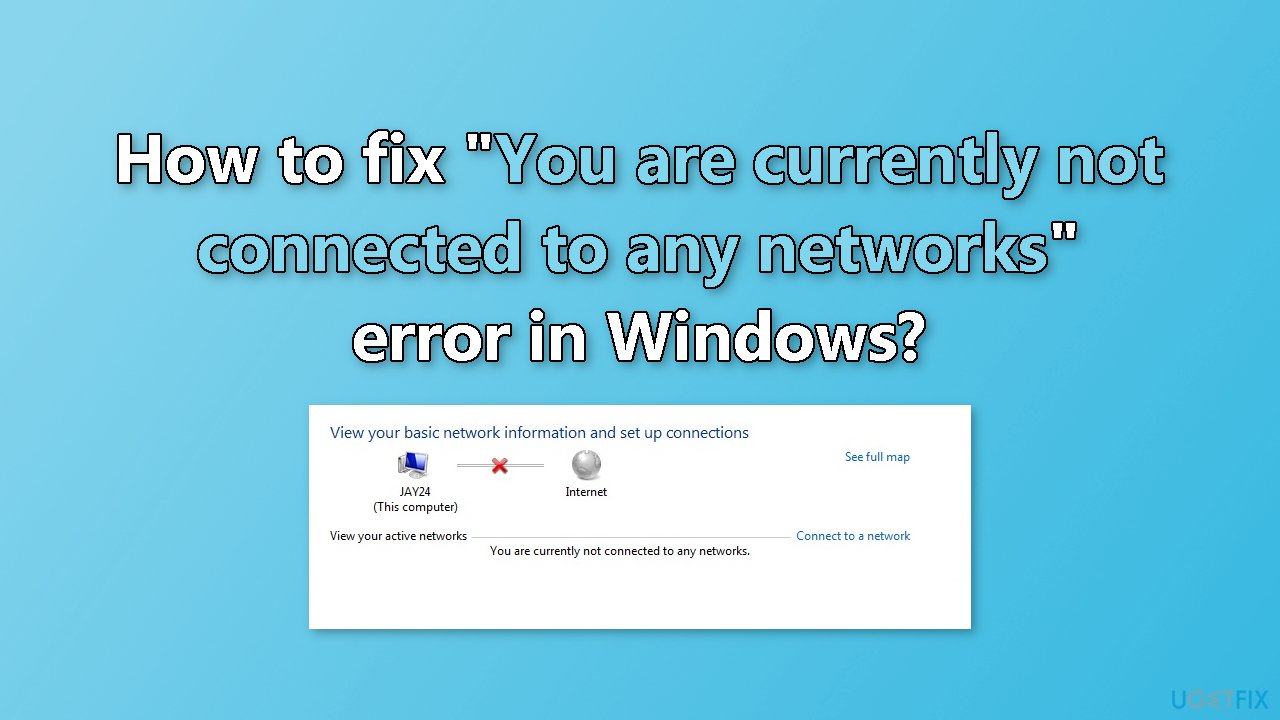
Method 1. Run Network Adapter Troubleshooter
The Network Adapter Troubleshooter in Windows is a built-in troubleshooting tool that can help diagnose and resolve problems with network adapters on a Windows computer. The troubleshooter can identify and fix common issues with network connections, such as incorrect settings, outdated drivers, and conflicts with other devices.
- Click Start menu and go to Settings
- Click System and press Troubleshoot on the right
- Click Other troubleshooters and find the Network Adapter option
- Click on the Run button next to it
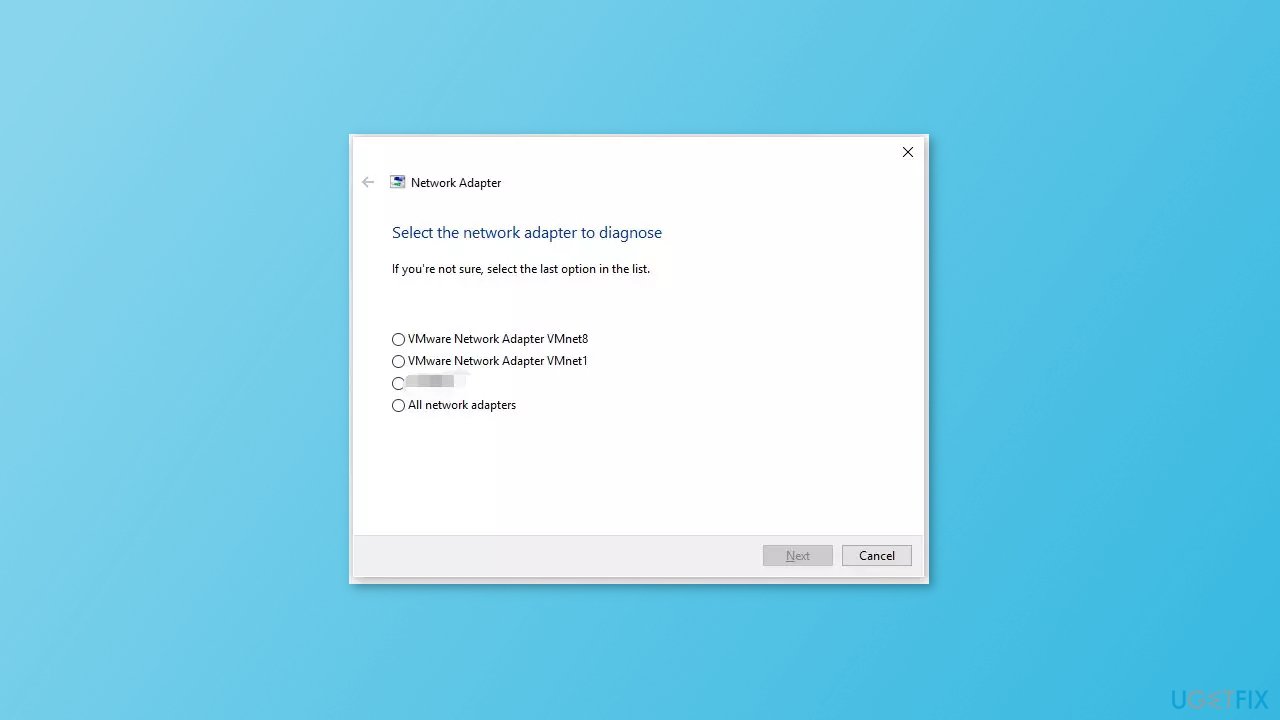
Method 2. Restart your Network Adapter
- Press the Windows key + R to open the Run dialog box
- Type ncpa.cpl in the dialog box and press Enter to open the Network Connections window
- Right-click on the WiFi adapter and select Disable
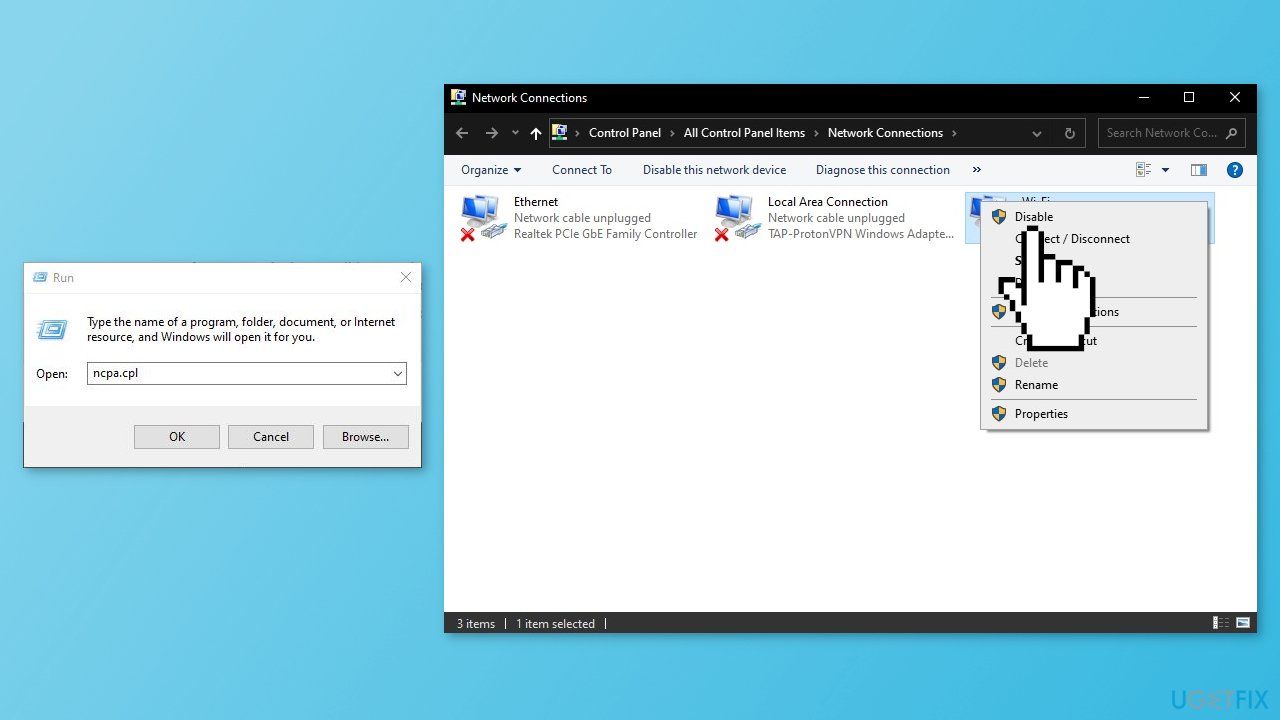
- Right-click on the WiFi adapter again and select Enable
- Check if the issue is resolved
Method 3. Perform a Network Reset
- Press the Windows key + I on your keyboard and click on Network & Internet
- Go to the right pane and click on Advanced network settings
- On the next Settings page, go to the right pane and scroll down to the bottom
- Click on Network reset and then Reset now
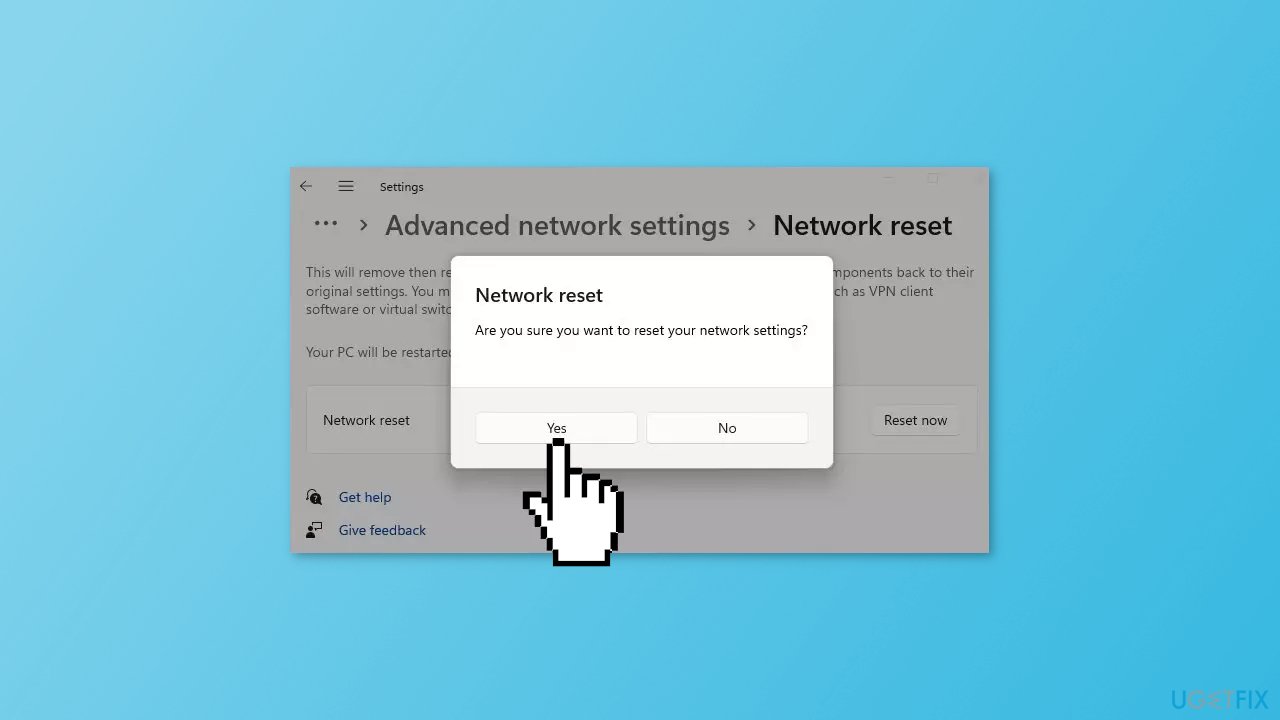
- Wait for the PC to restart and check if the issue is solved
Method 4. Change to Google DNS
Google DNS (Domain Name System) is a public DNS service offered by Google that aims to make the internet faster and more secure by providing users with faster and more reliable domain name resolution.
- Right-click on the network/connectivity icon on your taskbar
- Choose Open Network & Internet settings from the context menu
- Select Change adapter options from the new window
- Right-click on the network adapter you wish to configure and select Properties
- From the list under This connection uses the following items, click on Internet Protocol Version 4 (TCP/IPv4)
- Click on Properties
- Select the Use the following DNS server addresses option
- Enter 8.8.8.8 as the Preferred DNS server and 8.8.4.4 as the Alternate DNS server
- Hit the OK button to save the configuration
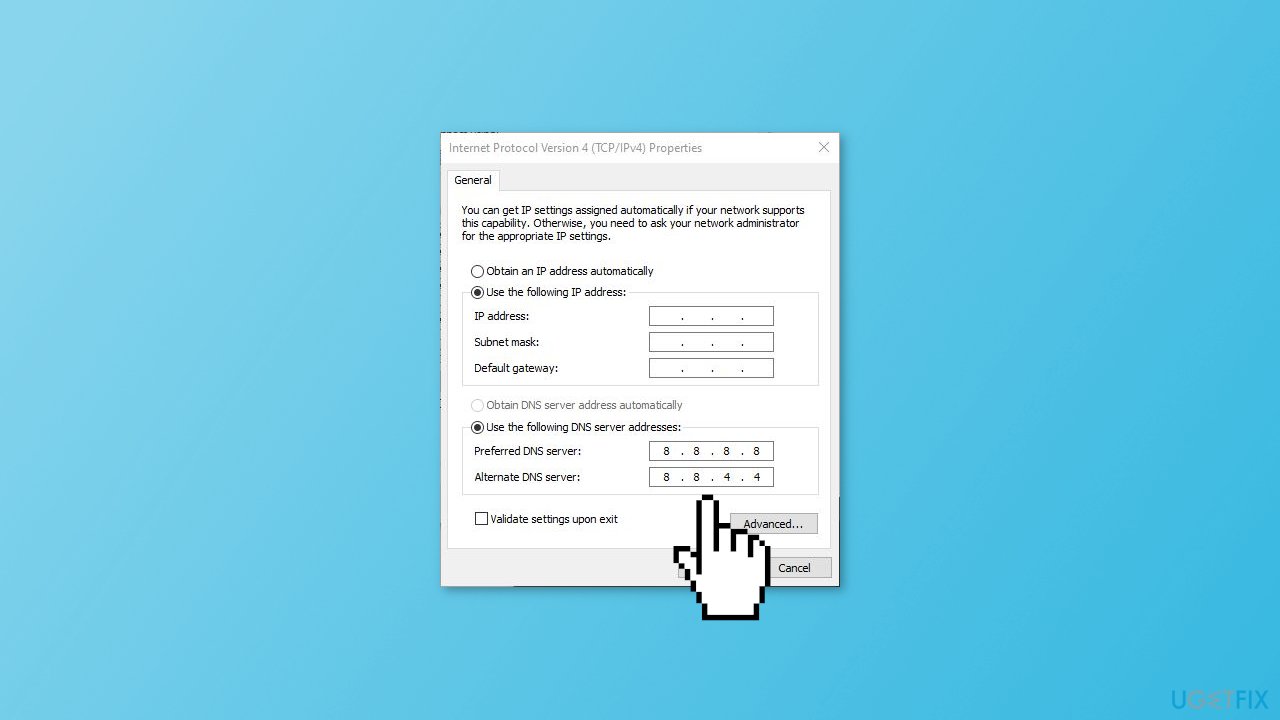
- Make sure to edit the adapter that you will connect to
Method 5. Reinstall Network Adapter Driver
You can also use a dedicated utility like DriverFix that can find the best drivers for your machine and install them automatically If you want to proceed with the manual process, follow these steps:
- Press the Windows key + X to open the Quick Link menu
- Click on the Device Manager feature
- Expand the Network adapters option and right-click on the Wireless driver and select Uninstall device
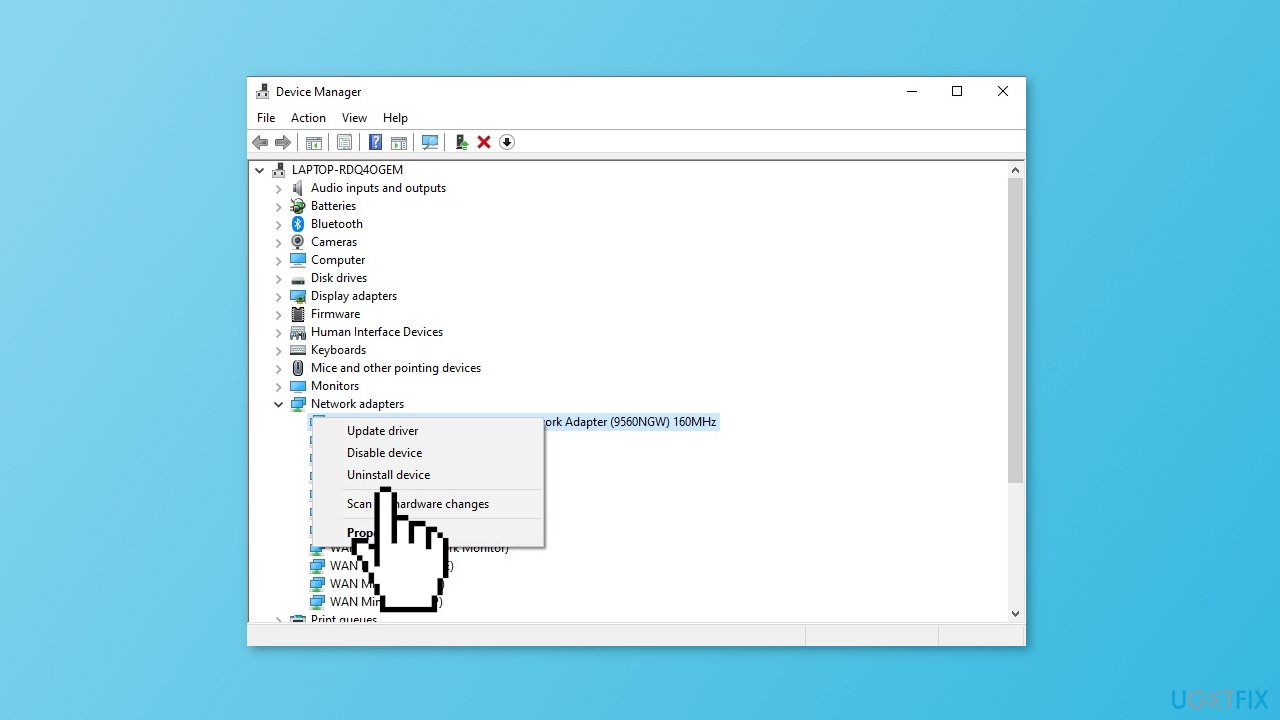
- Restart your device
- After reinstalling Network Adapters, right-click on it and select Scan for hardware changes
- If the installation fails, run the installation package of the driver you downloaded earlier
Repair your Errors automatically
ugetfix.com team is trying to do its best to help users find the best solutions for eliminating their errors. If you don't want to struggle with manual repair techniques, please use the automatic software. All recommended products have been tested and approved by our professionals. Tools that you can use to fix your error are listed bellow:
Protect your online privacy with a VPN client
A VPN is crucial when it comes to user privacy. Online trackers such as cookies can not only be used by social media platforms and other websites but also your Internet Service Provider and the government. Even if you apply the most secure settings via your web browser, you can still be tracked via apps that are connected to the internet. Besides, privacy-focused browsers like Tor is are not an optimal choice due to diminished connection speeds. The best solution for your ultimate privacy is Private Internet Access – be anonymous and secure online.
Data recovery tools can prevent permanent file loss
Data recovery software is one of the options that could help you recover your files. Once you delete a file, it does not vanish into thin air – it remains on your system as long as no new data is written on top of it. Data Recovery Pro is recovery software that searchers for working copies of deleted files within your hard drive. By using the tool, you can prevent loss of valuable documents, school work, personal pictures, and other crucial files.
- ^ Device driver. Wikipedia, the free encyclopedia.
- ^ Chris Hoffman. Everything You Need To Know About the Blue Screen of Death. Howtogeek. Tech Insight Magazine.
- ^ Tim Fisher. What Is the Windows Registry?. Lifewire. Software and Apps.



